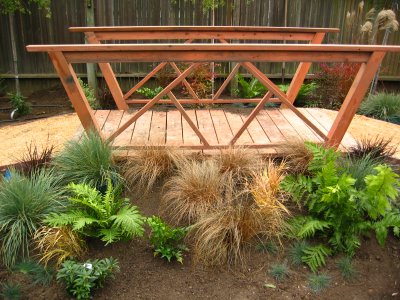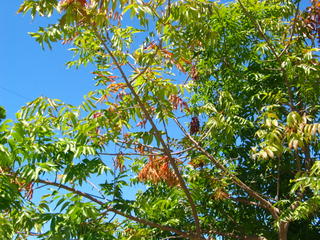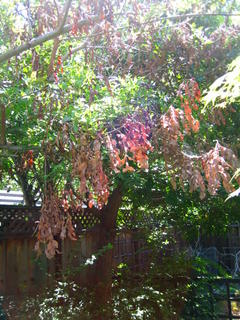Today is the
winter solstice -- the shortest day, and longest night, of the year, which means it's a great time to think about your landscape lighting.
Ideally, your lighting achieves a few objectives: it guides access; it provides safety and security, and it reveals new aspects of your garden's beauty. There's no shortage of
books on the subject of illuminating your landscape. Most will describe types of lamps and equipment, and design principles and techniques; some will also provide pointers for the do-it-yourselfer on installation and maintenance. Apparently there are even some "trade secrets" and "advanced trade secrets" to had!
And while it's true that you can get tricky with your lighting and achieve all sorts of nifty effects, that's best left for a lighting or landscape designer with some experience. If you want to improve your landscape lighting yourself, really there are just a handful of principles to keep in mind:
Use a judicious variety of techniques. Mix downlighting, uplighting, path lights and accent spotlights. (Just make sure that, as with your plantings, you don't have too many 'one-offs' that detract from a sense of continuity and cohesion in your garden.)
Divide your lighting system into a number of different circuits. For instance, you probably want to be able to turn off the lights around your hot tub, for stargazing or privacy, without plunging the rest of your landscsape into darkness.
Be flexible. Use only 2/3 the capacity of each transformer; install extra conduit and wire for future expansion; install extra receptacles close to your home and entertaining areas for holiday lights, temporary light fixtures, portable electronics, and so on; and install extra-long runs of wire to each fixture so it can be moved if necessary to accommodate mature plants or different placements.
Keep it simple. The more exotic your fixtures, the more difficulty you'll have replacing any broken or malfunctioning ones; and the more complicated your system, the more difficulty you'll have troubleshooting or reconfiguring it in the future.
Don't overlight. If everything in your garden is lit, nothing stands out. Use fewer lights more carefully to ensure maximum effect. Think of lighting in terms of "layers," creating a background, foreground and focal points. And avoid glare: light should never shine directly into eyes or across property lines.
If you're just installing a new landscape, or have more complex needs than some simple uplighting or downlighting, consider hiring a landscape designer or professional lighting designer -- the money you spend will more than pay for itself in terms of peace of mind and overall effect. Some lighting manufacturers will also design systems for you, and even arrange for "previews" of your system so you can fine-tune locations and effects before final installation.
Good luck, and good night!
 faux bridge
faux bridge well-placed deciduous trees
well-placed deciduous trees


 before
before
 after
after


